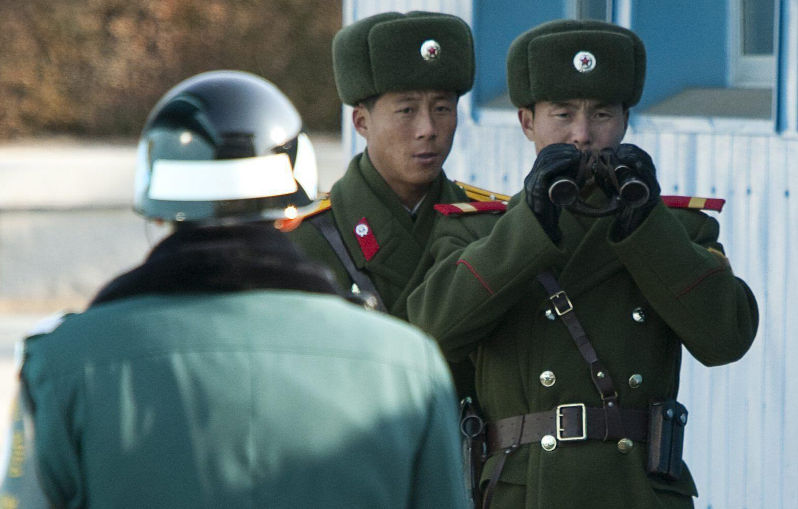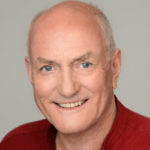While confrontations continue in Seoul between right and left-wing factions over the fate of Yoon Suk Yeol following his ill-conceived declaration of Martial law on 3 December 2024, it is instructive to look back at the many attempts to improve North-South relations when things seemed not quite so hopeless. Can they be revived?
Among the earliest was President Bill Clinton’s attempt to stop North Korea’s acquisition of nuclear weapons. It became clear to the American Embassy in Seoul in the mid-1980s that Pyongyang was constructing a nuclear reactor to the north of the capitol at Yongbyon, ostensibly for research, but in reality to produce plutonium and enriched uranium for nuclear weapons. Washington got worried and in 1994 Clinton offered Kim Jong-il a deal, the so-called Framework Arrangement.
Its main components were that if the North would dismantle its research reactor, Washington would supply two power-generating Westinghouse pressurised water reactors (PWRs) each of 1000 Mwe, plus 500,000 tons of heavy oil per annum to generate electricity until the reactors were up and running. Sweeteners included suspension ad interim of the annual US-ROK war game Team Spirit, and the offer of negotiations to establish full US-DPRK diplomatic relations.
Kim Jong-il accepted the deal and US technicians were soon helping North Korean engineers dismantle their 5 MW research reactor. But chronic delays prevented any kind of start to PWR construction, and with growing impatience Pyongyang abrogated the deal in 1998.
Any hope of revival was quashed in January 2002 by incoming President George W. Bush when in his first State of the Union address he characterised North Korea as part of an Axis of Evil. The North Koreans shrugged their shoulders and went ahead with their nuclear weapons plans anyway, just as Iran did in 2018 after President Donald Trump rejected the Joint Comprehensive Plan of Action which would have severely inhibited Iran’s march towards acquiring nuclear weapons.
US-North Korean relations were now characterised by coercion not conversation, sanctions not trade and rhetoric not dialogue.
Other sporadic efforts to bring North Korea in from the cold included a visit by American evangelist Billy Graham to Pyongyang in 1992, where he prayed that the Korean people would soon be re-united peacefully. And the year 2000 was full of promise as Hyundai Heavy Industries was permitted by Pyongyang to establish a factory in the industrial zone of Kaesong just north of Panmunjom.
In the same year, a North Korean deputy premier visited Washington and US Secretary of State Madeleine Albright visited Pyongyang along with ex-president Jimmy Carter and former Defence Secretary William Perry.
South and North Korean leaders also made efforts for rapprochement. One was symbolic – unification flags carried jointly by ROK-DPRK athletes at the World Table Tennis Championships in Japan in May 1991 and the World Youth Football Competition and in Portugal the same year. The two Koreas also paraded together at the Sydney Olympics in 2000, and again in Athens in 2004, at the Winter Olympics in Turin in 2006 and PeongChang in 2018.
Four South Korean presidents undertook more concrete steps. Between 1988 and 1993, Roh Tae-woo introduced his Northpolitik plan to improve economic and cultural relations. Kim Dae-jung (1998-2003) followed with his so-called “Sunshine” policy, named after an Aesop fable in which the Sun overcomes the fierce North Wind through persuasion rather than force. Kim wanted peaceful co-existence instead of reunification, military provocation by neither side, the separation of politics from economics, and reciprocity in which each country treated the other as an equal. South Korean food aid to the north was resumed, planning began on a railway between Pyongyang and Seoul, and the mythical Mount Kumgang in North Korea was opened up to South Korean tourists.
On 13 June 2000, Kim Dae-jung had a summit meeting with Kim Jong-il, the first between any two Korean leaders since the Korean War, an event which contributed to the ROK president winning the Nobel Peace Prize. The meeting resulted in a joint declaration of good intent, but Bush later poured scorn on the declaration when Kim Dae-jung visited him in Washington.
Two other South Korean presidents continued efforts to establish constructive relations with the North. Roh Moo-hyun (2003-2008) resurrected Kim Dae-jung’s sunshine policy and resumed humanitarian aid, and oversaw the start of the Kaesong industrial park. ROK aid to the DPRK amounted to $US324 million in 2005. Roh also travelled to Pyongyang in October 2007 for a second summit with Kim Jong-il. Eschewing air travel, Roo went by car via Panmunjom, symbolically crossing the bridge spanning the DMZ.
Following the fiasco of President Park Gyun-hye’s impeachment for corruption in 2017, Moon Jae-in was elected overwhelmingly as president in the same year. A disciple and colleague of Roo Moo-hyun, Moon re-energised Kim Dae-jung’s sunshine policy of accommodating North Korea. He had a meeting at Panmunjom with Kim Jong-un and tried to revive the Special Peace and Co-operation Zone in the Western Sea negotiated between Roo Moo-hyun and Kim Jong-il in October 2007.
Moon was also instrumental in engineering President Trump’s historic meeting with Kim Jong-un on 12 June 2018 at the Capella Hotel in Singapore, the first between incumbent presidents of the two countries. Trump promised Kim that he would discontinue “provocative” joint US-ROK military exercises and reduce US forces in South Korea to 22,000. The meeting was followed by a second encounter between Trump and Kim in Hanoi in February 2019.
Whatever progress was made was later white-anted by senior US officials John Bolton and Mike Pompeo, who hammered Trump about the impracticalities as they saw them of the president making promises to Kim that domestic politics in Washington would prevent him from keeping.
Meanwhile, amid concerns among some South Korean bureaucrats, especially those associated with defence forces, and conservative members of the public, Moon lost office to the conservative Yoon Suk-yeol in 2022. As Dr Myungji Yang wrote in Australian Outlook on 31 January 2024, the latter included right-wing You-tubers, evangelical devotees and T’aegŭkki national flag protesters who emerged in support of President Park Gyung-hye following her impeachment for corruption in 2017.
I share Dr Yang’s perceptions that these elements are currently outnumbered by those members of the Korean voting public who are repelled by any attempt to bring back the political repression of Syngman Rhee, Park Chung-hee and Chun Doo-hwan. But it is by no means clear at this stage whether conservative forces will eventually prevail.
A key element in the situation is what President Trump may do. If and when he can be persuaded to turn his attention to the situation on the Korean Peninsula, might he seek another meeting with Kim Jong-un? And if so, will he stick to his undertaking made in Singapore to go easy on North Korea, even to the extent of continuing negotiations towards normalising establishing diplomatic relations? Or will he change course and support conservative South Korean hegemonists and their US backers in locking the ROK into an alliance with Japan, the Philippines and Australia in confronting China?
Richard Broinowski AO is a former Australian diplomat, general manager of Radio Australia and adjunct professor at the Universities of Canberra and Sydney. He has published eight books, the latest being an expansion of his 2003 book Fact or Fission – the truth about Australia’ nuclear ambitions. The later edition includes extra chapters on Australia’s intention to acquire nuclear-powered submarines. (Scribe 2022).

